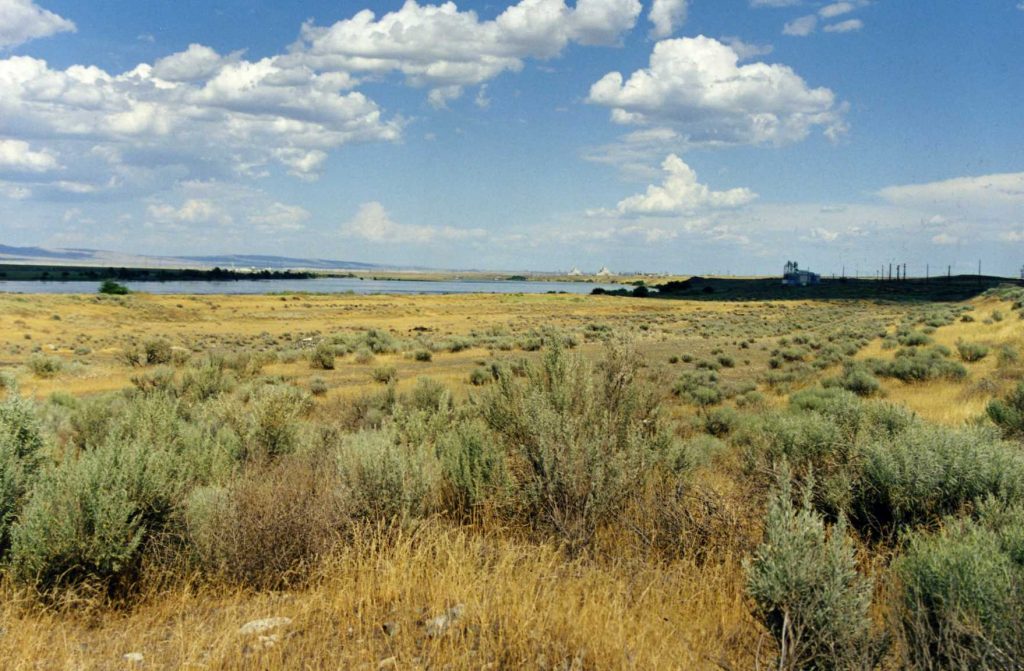Dr. Lauren Donaldson (1903-1998) was an ichthyologist who was hired by the Manhattan Engineering District at Hanford to monitor effects of radioactive contamination in the Columbia River. His project involved monitoring trout to determine any harmful effects of releasing coolant water from the Hanford reactors into the Columbia River.
Early Life
Donaldson was born on his family farm in Tracy, Minnesota on May 13, 1903. He first became interested with fish genetics while working on a fish hatchery in Montana. He received his bachelor’s from Intermountain Union College in Helena, Montana in 1926. Then in 1930, Donaldson moved to Seattle. He earned his Master’s and Ph.D. at the University of Washington School of Fisheries. While earning his graduate degrees, Donaldson joined the faculty in 1932 as an assistant instructor.
Manhattan Project
On August 1943, the University of Washington Board of Regents created the Applied Fisheries Laboratory after a request from the Office of Scientific Research and Development, and Donaldson was named as its first director. In 1944, the federal sponsorship changed from the Office of Scientific Research and Development to the Manhattan Engineering District of the Army.
Donaldson’s task was to study the effect of releasing the coolant water from the Hanford nuclear plant on the fish in the Columbia River. According to historian Michele Gerber, who wrote a history of the Hanford site, the fisheries laboratory hired Dr. Donaldson and “disguised” the link to Hanford. They even considered possibility of not giving Donaldson “any knowledge of connection between his work and project.”
Donaldson directed the laboratory from 1943-1958. His project kept fish in tanks and monitored the effects of radioactive contamination on the fish, both in the tanks and in the rivers.
Donaldson later served as an expert witness in the Hanford Nuclear Reservation litigation in 1995. He testified that he conducted short-term and long-term tests where he exposed fish to increasing level of radiation over the years. In the end, he concluded that although radiation was discovered in the Columbia River downstream from the Hanford reactors, this level of radiation was not harmful. His studies had shown that the radiation only became harmful at much higher levels of exposure.
Later Years
In 1946, Donaldson and a colleague worked as radiation monitors for Operation Crossroads. He planned and led the radiobiological activities for surveys and resurveys of Bikini and Enewetak Atolls from 1946-1964. In 1954, Donaldson was part of a joint Japanese-American scientific conference that followed after the Japanese fishing vessel Fukuryu Maru (Lucky Dragon) was exposed to radioactive fallout from the Castle Bravo test at Bikini Atoll.
Throughout his life, Donaldson made significant contributions to the field of fish genetics. His work on selective-breeding experiences produced five species of salmon and the “Donaldson trout.” He also helped build a hatchery at the University of Washington, creating a salmon run that brings salmon back to campus every year.
Donaldson retired in 1973 after serving on the faculty for 43 years, and continued to work as professor emeritus. In 1975, he received the Shinkishi Hatai Medal, which honors distinguished leaders in Pacific marine biology, and in 1987, he was named an Alumnus Summa Laude Dignatus, the University of Washington’s highest award.
He died on November 22, 1998 at age 95 from congestive heart failure.





